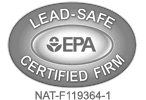A Beginner’s Guide to Indoor Air Quality
Living in a large metropolitan area like Seattle, WA, means that you probably pay attention to air quality alerts when you hear about them through the local weather forecast. The outdoor air quality may be unhealthy for many reasons, such as from wildfires, smog, and more. Just like there is outdoor air quality, there is also indoor air quality. Most Americans spend about 90% of their time indoors, and many of those hours are spent at home. A typical home’s indoor air quality is two to five times worse than the outdoor air. This article will help you learn more about indoor air quality, how it affects you, and how you can improve it.
What Is Indoor Air Quality?
Indoor air quality refers to the air in a home or building and how it affects your health. Poor-quality indoor air can have immediate effects on your health as well as long-term effects. Some indoor air quality problems are short-lived, while others are constant. At Brennan Heating & Air Conditioning, we recommend indoor air quality testing if you suspected that your Seattle area home’s air is more polluted than you would like it to be. If the air in your home does have a high concentration of pollutants, Brennan Heating & Air Conditioning offers a range of options for getting rid of them and improving your Seattle home’s indoor air quality.
Short-term Effects of Exposure to Poor Indoor Air Quality
There are many short-term effects of exposure to poor indoor air quality. It’s important to know that babies, the elderly, people with lung diseases, and pregnant women are more likely to experience health effects from lower levels of indoor air pollutants than a healthy person who doesn’t fall into one of these groups. The level of indoor air pollution that affects you might be a little different than the level at which another person experiences ill effects.
Some of the most common short-term effects of exposure to poor indoor air quality include irritation of the eyes, nose, and throat. Dizziness, headache, nausea, and fatigue are also common symptoms of bad indoor air quality. These symptoms often develop after you’re exposed to a high concentration of indoor air pollution in a short amount of time. For example, if you’re cleaning with concentrated bleach, you could develop these symptoms almost immediately after exposure.
If you have allergies or asthma, indoor air pollution typically worsens the symptoms you already experience from those conditions. Your congestion, sinus pressure, itching, or dry eyes might get worse. Coughing and chest tightness can also worsen. High concentrations of indoor air pollution can trigger severe asthma attacks.
Many of these symptoms are like those of common illnesses and allergic reactions. It might be a challenge to tell if your sneezing and coughing is from the particles generated by your fireplace or if you’re catching a cold. If symptoms start suddenly, affect more than one person in your home, and coincide with an activity you’re doing, chances are good they’re from indoor air pollution.
For most people, the best treatment for these immediate symptoms of exposure to high levels of indoor air pollution is to leave the affected area. If you’re cleaning with concentrated bleach and develop shortness of breath and dizziness, try using the exhaust fan, opening the windows, or going outside to alleviate your symptoms.
Long-term Effects of Poor Indoor Air Quality
In addition to the uncomfortable and debilitating short-term effects of poor indoor air quality, you may also develop long-term health effects. Many of the long-term health effects of poor indoor air quality are related to ongoing, chronic exposure. A constant, low- to mid-level number of particulates, volatile organic compounds, and other pollutants in your home leads to these long-term effects.
Some of the long-term effects of indoor air pollution you might experience include respiratory diseases, heart disease, and cancer. Chronic obstructive pulmonary disorder (COPD) is a common lung disease related to long-term exposure to polluted air. Heart failure, myocarditis, and heart attack are some forms of heart disease linked to long-term indoor air quality problems.
You can also develop long-term effects from a brief, but very high exposure to indoor air pollution. For example, if you’re exposed to asbestos fibers just once, you could develop mesothelioma 10 or more years after that one-time exposure. If you’re exposed to a high concentration of radon for a short period, you could develop lung cancer a couple of decades after the exposure. Radon is the second-leading cause of lung cancer in the United States. Only smoking is a higher risk factor for developing lung cancer. Your risk of developing lung cancer from exposure to indoor air pollutants is much higher if you’re also a smoker.
Top Causes of Indoor Air Quality Problems
Activities you do indoors, and items found within your home can cause indoor air quality problems. Some common activities that pollute indoor air include cooking with oil, using a fireplace or woodstove, using adhesives or glues, and painting. Applying a sealant, solvent or lacquer generates indoor air pollution. The application of pesticides in your home also creates indoor air quality problems.
Many items in a home or building contribute to indoor air quality problems. The building materials themselves, including drywall, flooring, and paints, release volatile organic compounds, formaldehyde, and benzene. These chemicals have both immediate and long-term health effects.
Everyday items you use are also sources of indoor air pollution. Dry cleaned clothing can produce off-gas chemicals. Upholstered furniture is another source of an indoor air pollutant. New plastic items and items treated with sealants or stain guards also produce off-gas.
There are biological indoor air pollutants that affect your home’s air quality. These include mold, dust mites, dust, mildew, pollen, cat spit, and pet dander. Bacteria and viruses may also be considered biological indoor air pollutants.
What You Can Do About Indoor Air Quality Problems at Home
There are many things you can do to reduce your exposure to indoor air pollutants at home and improve your home’s air quality. Brennan Heating & Air Conditioning recommends using the highest-rated air filter you can find for your Seattle home’s heating and air conditioning system. Air filters use the minimum efficiency reported value (MERV) rating system. MERV ratings range from 1 to 20. A MERV rating of 14 or higher is ideal for removing tiny particles. If you suffer from allergies or asthma or your household includes a high-risk person, choose a filter with a MERV rating of 16 or higher.
Increasing ventilation is another way to boost indoor air quality. Exhaust fans, energy recovery ventilators, heat recovery ventilators, and whole-home fans are good options. You may also consider a whole-home air purifier. These use UV-C and electrostatic filters.
Brennan Heating & Air Conditioning is proud to be Seattle’s trusted source of reliable indoor air quality solutions. You can also count on us for affordable heating and air conditioning maintenance, repair, replacement, and installations. We also offer energy audits, water heaters, electrical services, and air duct cleaning. To learn more about indoor air quality or schedule any of our services in Seattle and the surrounding communities, contact us at Brennan Heating & Air Conditioning today.







